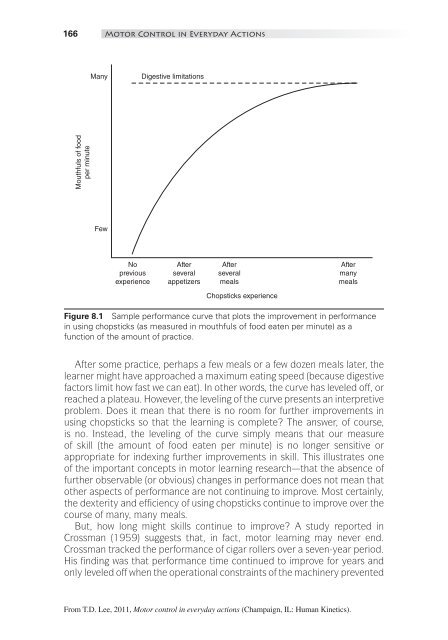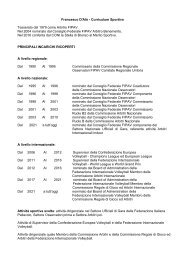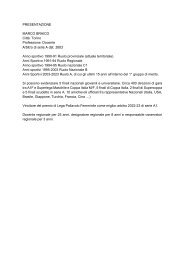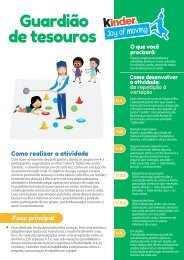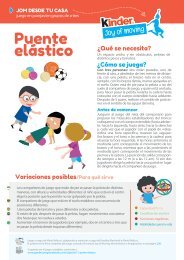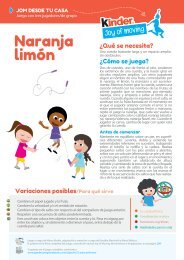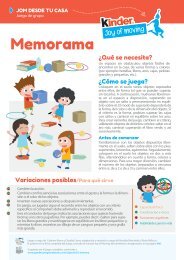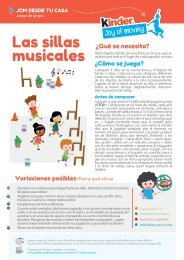How You Get to Carnegie Hall
Create successful ePaper yourself
Turn your PDF publications into a flip-book with our unique Google optimized e-Paper software.
166 Mo<strong>to</strong>r Control in Everyday Actions<br />
Many<br />
Digestive limitations<br />
Mouthfuls of food<br />
per minute<br />
Few<br />
No<br />
previous<br />
experience<br />
After<br />
several<br />
appetizers<br />
After<br />
several<br />
meals<br />
After<br />
many<br />
meals<br />
Chopsticks experience<br />
Figure 8.1 Sample performance curve that plots the improvement in performance<br />
in using chopsticks (as measured in mouthfuls of food eaten per minute) as a<br />
function of the amount of practice.<br />
E4867/Lee/Fig 8.1/393057/alw/r2<br />
After some practice, perhaps a few meals or a few dozen meals later, the<br />
learner might have approached a maximum eating speed (because digestive<br />
fac<strong>to</strong>rs limit how fast we can eat). In other words, the curve has leveled off, or<br />
reached a plateau. <strong>How</strong>ever, the leveling of the curve presents an interpretive<br />
problem. Does it mean that there is no room for further improvements in<br />
using chopsticks so that the learning is complete? The answer, of course,<br />
is no. Instead, the leveling of the curve simply means that our measure<br />
of skill (the amount of food eaten per minute) is no longer sensitive or<br />
appropriate for indexing further improvements in skill. This illustrates one<br />
of the important concepts in mo<strong>to</strong>r learning research—that the absence of<br />
further observable (or obvious) changes in performance does not mean that<br />
other aspects of performance are not continuing <strong>to</strong> improve. Most certainly,<br />
the dexterity and efficiency of using chopsticks continue <strong>to</strong> improve over the<br />
course of many, many meals.<br />
But, how long might skills continue <strong>to</strong> improve? A study reported in<br />
Crossman (1959) suggests that, in fact, mo<strong>to</strong>r learning may never end.<br />
Crossman tracked the performance of cigar rollers over a seven-year period.<br />
His finding was that performance time continued <strong>to</strong> improve for years and<br />
only leveled off when the operational constraints of the machinery prevented<br />
From T.D. Lee, 2011, Mo<strong>to</strong>r control in everyday actions (Champaign, IL: Human Kinetics).


